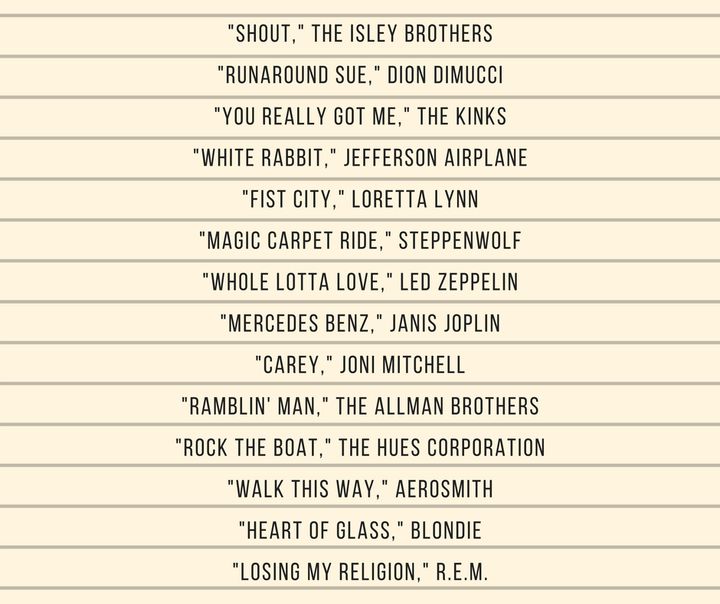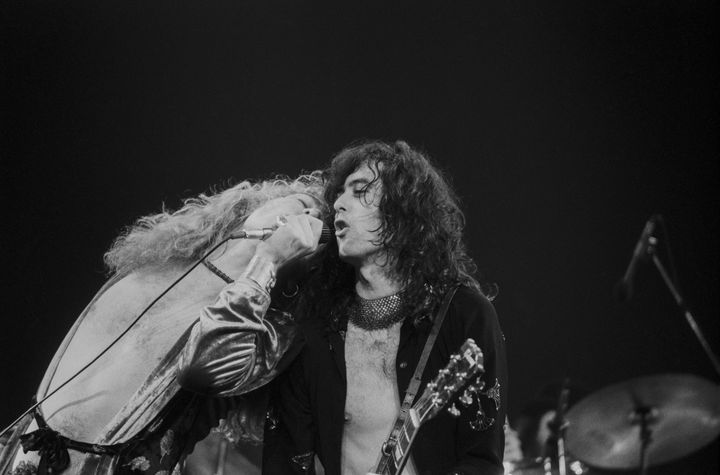
Learning the history of pop music in America is inherently a fun exercise.
These are songs, after all, that were made for easy recall, with hooks and rhythms that speak of universal feelings: love, loss, and good times. Marc Myers’ Anatomy of a Song — a spinoff of his Wall Street Journal column where he interviewed major musicians (think Debbie Harry, Stevie Wonder, Keith Richards and Smokey Robinson) to learn the origin stories of some of the most-well known songs over five decades — reads like a dream karaoke playlist. Not a dud in sight.
Of the 45 songs featured in Myers’ book, I was alive for the release of just two: Bonnie Raitt’s “Nick of Time” and R.E.M.’s “Losing My Religion.” Reading his book, this fact is irrelevant. The tunes and lyrics of “My Girl,” “London Calling,” “Suspicious Minds,” “Midnight Train to Georgia,” and countless other timeless tunes swirled in my head as I read. Where did this knowledge come from, if not direct lived experience? How do these songs earn their spot in our collective knowledge, while others fade into obscurity for only the most devoted fans of a genre to hear and scrutinize?
“By calling these hits iconic, I owed a certain amount of responsibility, and that is to define the word iconic,” Myers explained to me over the phone. “My definition of an iconic song is something that lasts the test of time. But then the question is: What is time?” He settled on a quarter century, enough years for a new generation to take the place of an older one.

While Myers’ WSJ column didn’t have as cohesive a feel, he found that collecting his interviews and arranging them in chronological order allowed a new narrative to emerge.
“I wanted to create a horizontal pull, so that if all you did was read the introductions, you’d get a great story on the rise of R&B and rock ‘n’ roll and soul and reggae and female folk singer-songwriters ... there’s a story unfolding that goes beyond, that transcends just these interviews,” said Myers. It’s a good overview of major staples from the 20th century in American pop music as opposed to being a comprehensive list.
With each song history comes a brief overview of the time period from which it came forth: “Please Mr. Postman” arose from record companies’ decision to steer away from suggestive rock ‘n’ roll toward massively appealing, softer songs in the 1950s. The Doors’ “Light My Fire” was released as both a seven-minute and a two-minute version, the former more closely resembling the band’s live performances, which were lengthy and meandering to appeal to an LSD-loving crowd.
Differences between artistic inspiration and record company interests are a common theme. While reading the chapter on Led Zeppelin’s “Whole Lotta Love,” Myers said, “you start to realize that [guitarist] Jimmy Page abhorred singles ... He wanted to create a bigger, longer, larger canvas.” Attitudes like Page’s, Myers explained — along with the rise of FM radio stations that had airtime to fill — led to the trend of rock albums being treated as a whole musical product, instead of a mere catalog of singles. Of course, the record company did cut down “Whole Lotta Love” into a single format.
“You start to see that there’re reasons why these things happen and reasons why they sound the way they do at these specific periods of time,” said Myers.

The other benefit to Myers’ book is, naturally, hearing about the creation of pop music’s best-known songs straight from the creators themselves — and being able to see them in a whole new light.
“I’m a fan of the music, because I grew up with the music, so I live and breathe it,” Myers explained. “But I don’t view them the way a fan would. I view them as if I’m in Rome going to churches to look at art.” He continued, “I wasn’t coming to talk about sex, drugs and rock ‘n’ roll. I was coming to talk about the art of what they did. Only the art.”
Myers cited his interview with Stevie Wonder as a standout moment. Myers was talking with the musician about the technical details of “Love’s in Need of Love Today” — a song that, in the book, Wonder reveals was first recorded using a cassette recorder, allowing him to preserve his initial inspiration “like a sketch.”
When Myers asked Wonder a question about the song, “the line went quiet,” he explained.
“I was starting to think to myself, ‘Oh, boy, maybe that was not a great question, This interview is going to be over,’” he said. “The next thing I hear, maybe 30 seconds later ... I hear, ‘Marc, can you hear me?’ And I say, ‘Yeah, yeah, I can hear you.’ And he starts to sing the entire song while he’s playing this instrument that he has at home called the harpejji — and it’s sort of a combination between piano and guitar. He was trying to explain what he was trying to do with the vocals, and he just felt [he had to] take the phone into his studio at home and sing it. In every single song, something like this happened.”
Anatomy of a Song is out now from Grove Press.


